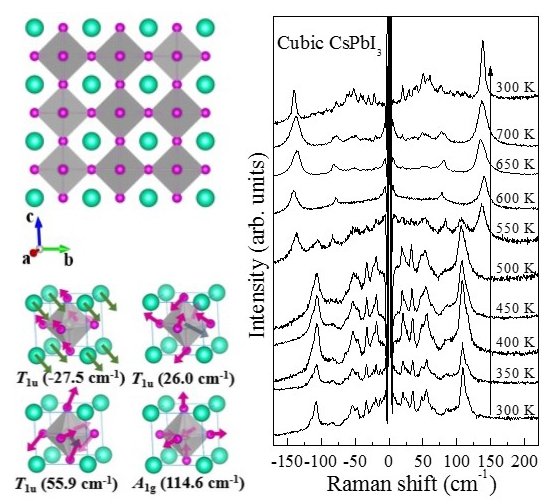New Progress about Lattice Dynamics and Thermal Stability of Perovskite CsPbI3 Quantum Dots
Date:03-01-2019 | 【Print】 【close】
Prof. SUI Fan and Prof. ZHONG Guohua from Shenzhen Institute of Advanced Technology, Chinese Academy of Sciences, have made new progress on the lattice dynamics and thermal stability of perovskite CsPbI3 quantum dots study. CsPbI3 QDs were fabricated and their lattice dynamic and thermal stability up to 700 K was studied. This study is the first report of raman evidences of CsPbI3’s lattice dynamics and revealed the physics origin of perovskites' degradation at elevated temperature. The new progress was published at Journal of Physical Chemistry Letters.
Inorganic perovskites CsPbX3 quantum dots (X = Cl, Br, I) have emerged as an excellent optoelectronic material, owing to their merits of ultrahigh luminescence quantum yield (~100%) and tunable broad spectrum emissions from the ultraviolet to the visible (UV-vis) spectral range. Though the stability of inorganic perovksites is better than hybrid perovskites, device property degradation happens after running at elevated temperature, whose origin mechanism is still unclear.
To study the relation of lattice dynamics and thermal stability, Prof. SUI Fan has achieved Raman modes of cubic CsPbI3 QDs from 300K to 500 K were obtained at ultra-low-frequency range down to 15 cm?1 for the first time on the Al2O3 nanolayer protected CsPbI3 sample. The lattice dynamic was explored by first principle study and accordingly, the temperature dependent thermal vibration modes were assigned to the Raman modes by Prof. ZHONG Guohua. Cs vibration opposite to I atoms is one of the critical reason for the sample degradation below 400 K.

Fig. Crystal structure and vibrations modes of CsPbI3 lattice; Temperature dependent Raman spectrum of CsPbI3 quantum dots
